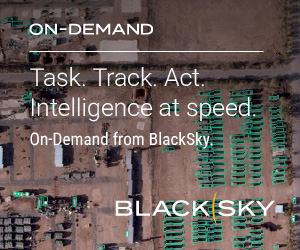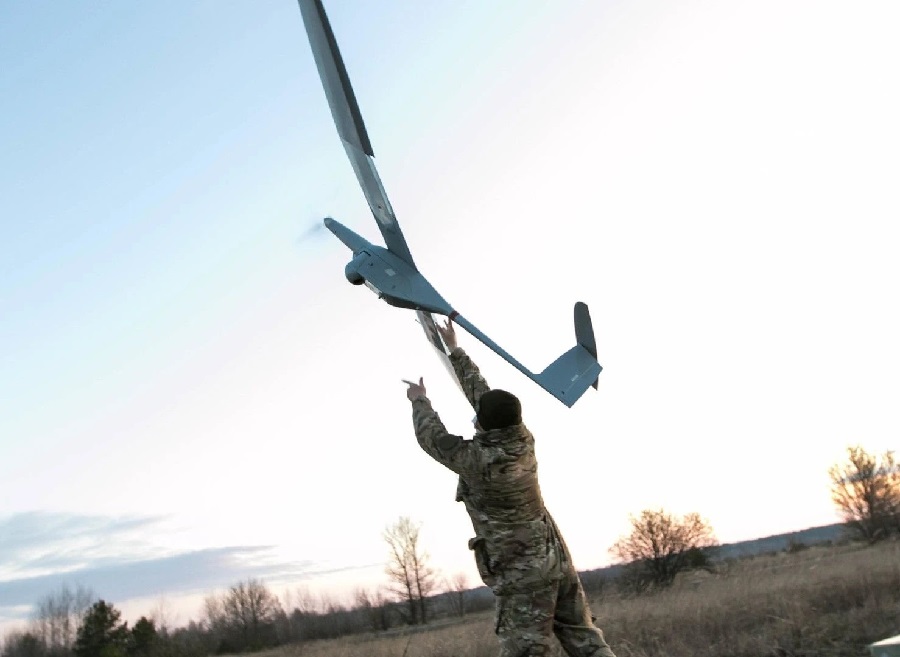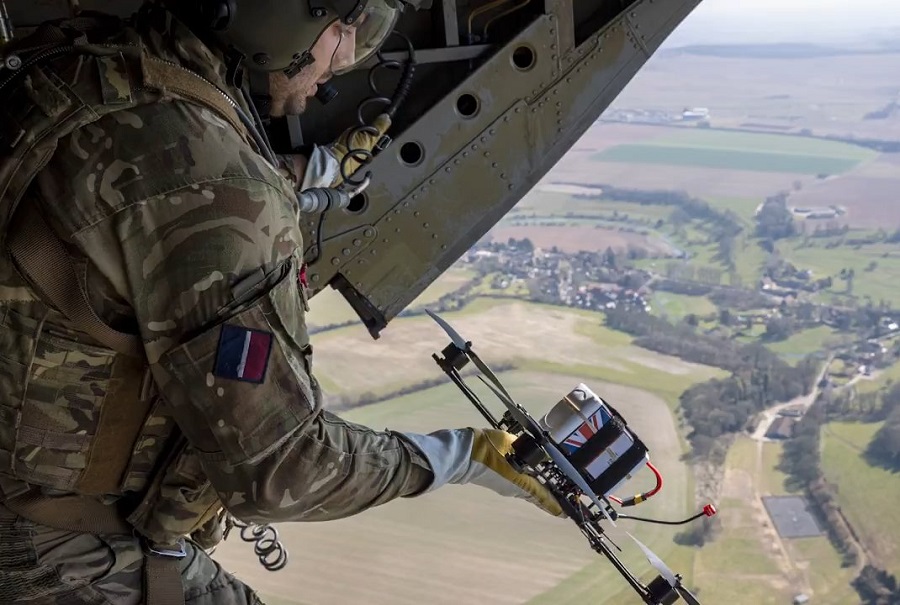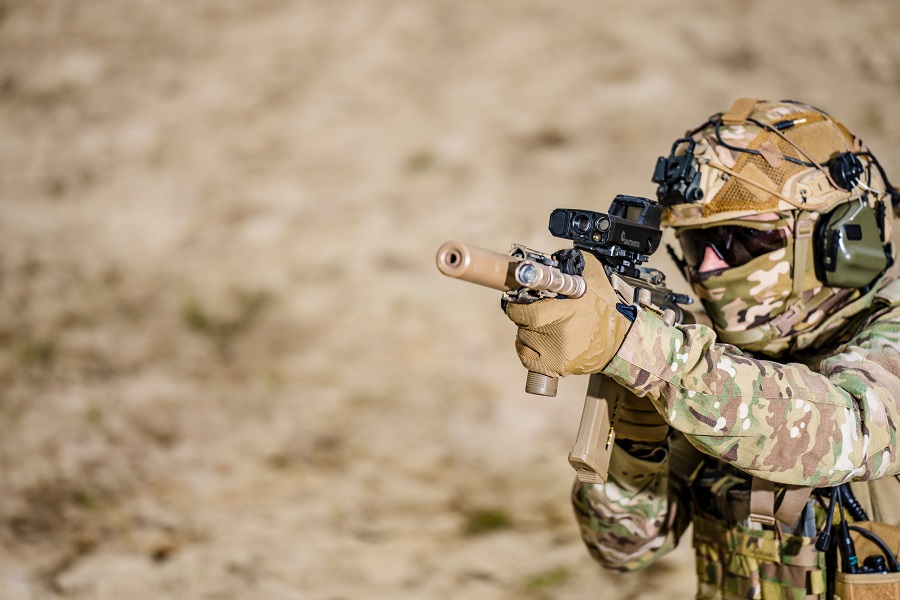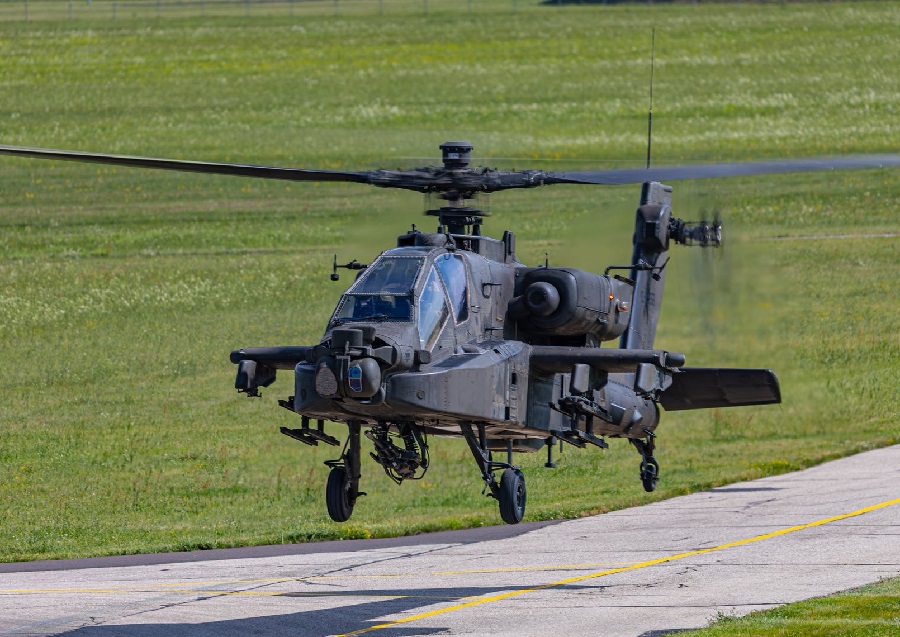Introduction
As a key instrument in the long-range destruction, neutralisation, and suppression of enemy positions, artillery has long been indispensable in warfare, evolving from early contraptions used to hurl rocks and shoot arrows to the modern battlefield’s exceptionally mobile and accurate cannons launching highly explosive projectiles (Defense Technical Information Center, 1983). On the modern battlefield, artillery possesses several unique abilities. It can operate close to and in cooperation with ground forces to destroy and degrade enemy ground capabilities near the front lines, its range allows it to target vast swathes of territory with heavy indirect fire, it can be operated day and night, is fairly mobile, and can be concealed to boost survivability (McGrath, 2013).
Vladimir Putin’s full-scale invasion of Ukraine in February 2022 and the subsequent more than two years of combat have put artillery back at the forefront of military thinking when it comes to land warfare. Though the Russo-Ukrainian War has its own unique characteristics that are unlikely to arise in a conflict directly involving the West, such as the lack of air superiority on either side (Gordon, 2023), it offers considerable insight into the nature of modern conventional warfare between two capable belligerents nonetheless. The key role of artillery in the conflict has created an urgent need for military support for Ukraine so that it can sustain its operations on the battlefield. The sheer scale of Ukraine’s ammunition needs and the West’s struggles in providing it has highlighted that Western allies – particularly European ones – lack the defence industrial base necessary to support full-scale conventional artillery warfare. Though the U.S. defence industry has more than doubled its output of 155mm artillery ammunition since late 2022 (Detsch, 2024), NATO intelligence estimates that Russia is currently producing about three times as many shells as the US and Europe combined (Bo Lillis, Bertrand, Liebermann & Britzky, 2024). Furthermore, the EU failed to deliver a promised one million 155mm artillery shells to Ukraine by March 2024, and instead only managed to deliver around 30 per cent of this number (Brzozowski, 2024).
This paper investigates various areas of interest within the realm of artillery as it reasserts itself at the centre of full-scale military conflict. The first part of this analysis reviews the overall state of artillery in Ukraine and outlines the significance of artillery and conventional munitions for both Russian and Ukrainian armed forces, also exploring precision-guided munitions (PGMs) and mortars on the Ukrainian battlefield. The second section evaluates recent developments in artillery, from the enormous increase in munitions production within Western countries to innovations regarding PGMs. Finally, the paper concludes by addressing the challenges associated with boosting production and mobilising artillery for the future battlefield.
Artillery in Ukraine
As the full-scale war enters its third year, artillery strikes have remained central to Russian military strategy as artillery continues to shape the fighting (Watling & Reynolds, 2023). In 2022, Russia fired anywhere from 20 to 60,000 artillery rounds per day in Ukraine, amounting to approximately 12 million artillery rounds fired throughout the year (Watling & Reynolds, 2023).
Although Russia was unable to sustain this frequency of fire by early 2023, artillery nonetheless remained its “primary form of lethality” in deep and close battles, enabling the Russian armed forces to strike targets across large distances while holding Ukrainian forces at bay (Cranny-Evans, 2023). The lethality of Russian artillery on the battlefield cannot be understated as over 70 per cent of all Ukrainian combat casualties can be attributed to artillery and rocket barrages (Epstein et al., 2023).
Russian artillery has been pivotal in supporting both offensive and defensive operations in Ukraine. Offensively, for instance, mass artillery strikes have enabled the Russian military to make up for the insufficient training and general incompetence of military personnel as well as the rigid, initiative- quelling structure of Russia’s military hierarchy. The Russian military has to some extent been able to compensate for these shortcomings by adopting barrage fire tactics, striking Ukrainian positions for several hours to clear the way for mobile and infantry units to engage and potentially advance (Davydenko et al., 2022). Concurrently, on the defensive, Russian artillery fire is used to blunt Ukrainian assaults. When Russian forces identify potential Ukrainian offensive preparations, the location is often bombarded in a bid to pre-emptively halt it or, alternatively, Russian forces will withdraw from a position actively under assault only to bombard it when Ukrainian forces attempt to hold it and consolidate their position (Watling & Reynolds, 2023).
Artillery is also of immense importance to the Ukrainian Armed Forces (UAF), though the UAF’s use of artillery differs slightly from their Russian counterparts. As they are unable to match Russian numbers, munitions and firepower, Ukrainian artillery tactics instead rely on firing in a “dispersed manner, with a strong emphasis on counter-battery manoeuvres and superb tactical and operational camouflage” (Świętochowski, 2023). Hence, the UAF depends on precision to achieve its objectives, locating vital assets in Russian formations and striking them in a bid to cripple the enemy’s operational potential (Świętochowski, 2023). Fielding 350 artillery pieces against Russia’s 4,000 as of early 2024 (Watling, 2024), Ukraine’s arsenal of artillery is dwarfed by Russia’s. This discrepancy makes survivability a more acute issue for Ukraine, as they cannot afford to lose artillery pieces and subsequently aggravate the imbalance in absolute terms. To enhance survivability, Ukrainian artillery units are often positioned in forested areas and organised in smaller formations spread on a wide front to avoid them from being too concentrated and thus prevent them from serving as an overly valuable target for Russian counter-battery fire (Baranov, 2023).
This asymmetry grants Russia certain advantages. For instance, after firing and revealing their position, Ukrainian artillery units must quickly move or stay out of range to avoid being destroyed by Russian counter-fire. Conversely, Russian artillery can simply move one gun after firing while beginning to fire with another due to a greater number of fielded systems, thus maintaining a constant artillery threat for Ukrainian forces (Watling, 2024). Moreover, Russia’s numerical superiority and a Ukrainian shortage of artillery munitions also grant Russian forces an advantage. Throughout early 2024, Ukraine has been rationing itself to firing just 2,000 rounds per day across the front, greatly reducing the UAF’s ability to blunt Russian offensives and condemning Ukraine to a permanent defensive posture in which it will inevitability cede ground (Watling, 2024).
Among the most effective weapons provided to Ukraine, the 155mm round has been one of the most requested artillery munitions throughout the war, as benefactors have sent more than 2 million 155mm rounds as part of military aid packages (Babb & Yarysh, 2024). 155mm ammunition has been widely used due to its ability to strike a middle-ground in size, as it can travel further than larger models while retaining damage upon impact to a degree that smaller shells are unable to achieve (Baskins, 2023). The rounds can also be mobilised in several ways. They can be loaded with highly explosive material, used to pierce armour, produce high fragmentation, and even be combined with precision guidance systems (Cobb, 2023).
In addition to guided and unguided 155mm rounds, precision-guided munitions (PGMs) in general have also been crucial to combat in Ukraine, aiding the UAF in bridging the artillery gap. PGMs fired from systems such as the M270 Multiple Launch Rocket System (MLRS) and M142 High Mobility Artillery Rocket System (HIMARS) have significantly shaped the battlefield, as they grant the UAF the ability to strike Russian logistics nodes and troop concentrations with remarkable accuracy (Duoro, 2023). Such weapons have afforded Ukraine a precision advantage that reduces the number of projectiles required to strike targets, allowing vehicles to promptly relocate after firing to avoid counter-battery fire (Duoro, 2023).
In the Ukrainian experience, PGMs and guided artillery rounds have been “disproportionately effective” and have reduced strain on the UAF’s logistics (Bosbonitis, 2023). HIMARS, for example, has offered Ukraine the range, mobility and precision needed to strike targets that might otherwise require a large number of artillery systems firing en masse. Such capabilities have directly translated to success on the battlefield; in 2022, Ukrainian commanders credited 70 per cent of Ukrainian advances on the Kherson front to HIMARS (Kalin & Michaels, 2022). Several European states have also taken note of the efficacy of such systems in Ukraine and are either looking to procure HIMARS or develop their own version of the weapon (Peck, 2023). As an example of this interest in long-range high-precision systems, Poland has decided to purchase 18 HIMARS, rocket artillery models, and an extensive supply of PGMs from the United States in a deal worth an estimated $10 billion (Defense Security Cooperation Agency, 2023).
Mortars have also been significant throughout the Russo-Ukrainian War, and the classic 81mm and 120mm infantry mortars are the prevailing types used by Russian and Ukrainian forces (Khoma, n.d.). Though mortars lack the range and precision of modern artillery systems, they enable responsive area fire and are more versatile at shorter distances, allowing for the destruction of fortified positions and unfortified enemy infantry (Khoma, n.d.). Compared to artillery, mortars are more disposable and portable, as infantry can transport 81mm mortars unassisted, though admittedly not without strain (Guest, 2024). Further, specific circumstances in Ukraine have rendered mortars particularly useful. Mortars possess the ability to fire projectiles at a high upward trajectory, instead of the flat trajectory of howitzers, which makes them a useful tool for striking targets without a clear line of sight, whether behind a hill, in an urban setting, or a trench (Miller, 2017).
In short, the Russo-Ukrainian War has demonstrated that mortars remain “vital tools for delivering organic indirect firepower at the company and battalion level across short and medium ranges” (Khoma, n.d., p.6) and are well suited to tackling the particularities of the Ukrainian battlefield, especially in the context of the re-emergence of trench warfare.
Artillery munitions – developments in light of the Russo-Ukrainian war
Against the backdrop of artillery warfare in Ukraine, the Western artillery picture has undergone several developments in the lead-up to, and during, the Russo-Ukrainian War. Principally, the US and European states are making concerted efforts to boost artillery shell production to replenish stockpiles and free up supply to provide to Ukraine. The US has doubled their monthly production of 155mm artillery shells up to 28,000 (Rogers, n.d.), expecting to ramp up production to levels as high as 70 to 80,000 rounds per month by the end of 2024 (Babb & Yarysh, 2024). However, the US’ ultimate goal of ramping production up to 100,000 shells per month in 2025 remains unattainable unless further funding is allocated (Babb & Yarysh, 2024).
Concurrently, the EU has allocated a budget of €500 million for artillery ammunition and missiles as part of the Act in Support of Ammunition Production (ASAP), with more funding expected through the proposed European Defence Industry Programme (EDIP) (European Commission, 2024b), in a bid to boost artillery shell production capacity, which could see the bloc produce as many as two million shells a year by 2026 (Posnaer, 2024). American and European efforts in this realm remain of utmost importance to the Ukrainian war effort, as Ukraine would need approximately 356,000 shells a month for the “successful execution of battlefield tasks” (Tucker, 2024).
Multi-year procurement contracts have also been agreed by Western states seeking to ensure a steady flow of artillery ammunition to Ukraine and replenish their own stocks. The US Department of Defence (DoD) has awarded defence contractors with several multi-year contracts for 155mm munitions since the war broke out (Rogers, n.d.). For instance, the DoD concluded a deal for the production of 155mm M1128 high explosive (HE) projectiles for around $974 million by an estimated completion date of September 2028 with defence manufacturers American Ordnance and General Dynamics Ordnance & Tactical Systems (US DoD, 2023b). Additionally, NATO allies have moved to refill their stocks through joint procurement, concluding contracts for a further $1.2 billion in artillery ammunition in early 2024 (NATO, 2024). The EU has also followed suit with a flurry of initiatives, beginning with a “three-track proposal” to urgently provide Ukraine with ammunition and replenish stocks (European Council, 2023). The three-track proposal consists of, firstly, a plea to member states for the urgent transfer of ammunition from their own stockpiles to Ukraine; secondly, an agreement to jointly procure one million ammunition rounds; and finally, a view to ramp up production capacity within the European defence industry resulting in the launch of ASAP (European Parliament, 2023a). Along with ASAP, the Union is attempting to tackle capability gaps through the establishment of the European defence industry reinforcement through common procurement act (EDIRPA) in October 2023, set to last through to the end of 2025 (European Parliament, 2023b).
Moreover, the recent European Defence Industrial Strategy (EDIS) and the accompanying proposal for EDIP in March 2024 promise to strengthen Europe’s defence industrial base through more collaborative investments and the conceptualisation of a common defence readiness culture across the Union (European Commission, 2024a).
However, while such EU defence initiatives in response to Russia’s full-scale invasion of Ukraine are a step in the right direction, underlying issues remain. For instance, the budgets for ASAP, EDIRPA and EDIP are €500 million, €310 million (European Commission, n.d. – b), and €1.5 billion (European Commission, n.d. – a), respectively, all very modest compared to the €240 billion EU member states spent on defence in 2022 (European Defence Agency, 2023). The low budgets of such initiatives, coupled with the ever-present issue of whether the Commission can incentivise the member states to voluntarily participate (Scazzieri, 2024), signifies that, although the EU is becoming more involved in defence, short-term results will be limited and more resources will inevitably need to be dedicated.
Recent innovations – performance, precision and “shaped trajectory”
As the West moves to produce and procure more artillery munitions, steps have also been taken to improve the capabilities of Western artillery and promote innovation. When it comes to artillery, the improvements sought are mainly enhanced range, performance, mobility, and lethality. In regard to the aforementioned US-made 155mm M1128 HE projectile, the DoD has looked to boost both production and the projectile’s range, which has been extended from 22 to over 30 kilometres (Rogers, n.d.; General Dynamics Ordnance & Tactical Systems, n.d.). Similarly, the UK has looked to innovate its stockpile of 155mm munitions through BAE Systems’ development of Next Generation Adaptable Ammunition (NGAA) (BAE Systems, n.d.). NGAA is to replace the British Army’s ageing L15 family of ammunition and deliver enhanced range and lethality compared to currently available models while securing production by designing the shells so they can be produced using commercially available – rather than defence-specific – materiel (Newton, 2023; Valpolini, 2023).
Furthermore, mortar innovation has also received attention in the West. Elbit Systems of America was awarded a contract by the US Army’s Office of the Project Manager for Combat Ammunition Systems (PM-CAS) with a maximum potential of $49 million to produce M121 120mm Carrier Mounted Systems and M120A1 120mm Ground Mounted Mortar Systems through 2027 (Elbit Systems, n.d.). PM-CAS has also facilitated the development and started production of an 81mm mortar cartridge with approximately the same lethality as a 120mm cartridge (Rogers, n.d.). Beyond just innovation, the importance of mortars for the Ukrainian war effort has also been recognised. For example, the German government has ordered Rheinmetall to supply Ukraine with around 100,000 rounds of 120mm mortar ammunition over the next two years, reportedly worth a figure in the “lower-three-digit million-euro range” (Rheinmetall, n.d.).
In recent years, precision guidance kits (PGKs) mark a further step towards improving artillery munitions.
A US-made M1156 PGK, for instance, can be screwed onto the nose of a conventional 155mm round and markedly improves the projectile’s precision, which effectively reduces target delivery error and the number of projectiles required to execute a fire mission (Joint Program Executive Office Armaments & Ammunition, n.d. – a). PGKs of this nature have been provided to Ukraine, granting the UAF a marked improvement in accuracy as, when attached to a 155mm shell, the device provides a “maximum circular deviation” of up to 50 metres at a distance of up to 30 kilometres, down from an unmodified deviation of 273 metres (Militarnyi, 2022). The cost factor is also worth noting, as a PGK costs $20,000, making it a cheap alternative to more sophisticated projectiles such as the M982 Excalibur, which costs about $200,000 (Militarnyi, 2022). As a result, PGKs are a highly sought-after commodity, with the Dutch military requesting to purchase an estimated $70 million in M1156 PGKs and related equipment from the US in 2018 (Defense Security Cooperation Agency, 2018). Furthermore, the US Army and private defence manufacturers have made efforts to further increase the range and accuracy of 155mm projectiles with the development of long-range precision guidance kits (LR-PGKs) (Joint Program Executive Office Armaments & Ammunition, n.d. – b). In October 2022, BAE Systems successfully tested its LR-PGK for 155mm projectiles as part of the U.S. Army’s Extended Range Cannon Artillery (ERCA) initiative, as the kit uses anti-jam GPS sensors to deliver accurate fires up to 70 kilometres and meet mission objectives with fewer shots (BAE Systems, 2022).
As part of Western military aid to Ukraine, Kyiv has hailed the M982 Excalibur as one of the most effective weapons provided due to its successful use in striking and destroying Russian targets (Kyiv Post, 2023; Shoaib, 2023). Since the outset of Russia’s invasion of Ukraine, the UAF has received over 7,000 precision-guided 155mm artillery rounds, including Excalibur rounds (US DoD, 2024). In particular, the GPS-guided Excalibur rounds have granted UAF artillery high accuracy and an enormous range, as a round fired by a regular artillery piece is able to land within around two metres of a target 40 kilometres away (Forces Net, 2023). Recently, the US military has been able to further demonstrate that an Excalibur projectile can feasibly hit a point target at 70 kilometres (Rogers, n.d.) when fired from a .58-calibre artillery system (Raytheon, n.d.).
Regardless, one of the key innovations for Excalibur rounds is the establishment of “shaped trajectory” technology, known as the Excalibur 1B variant. Enhanced “shaped trajectory” software enables Excalibur 1B projectiles to “eliminate targets in hard-to-reach locations by selecting the projectile’s terminal or final phase attack angle” (Raytheon, n.d.). This projectile has fins and canards that enable it to steer and perform a U-turn (Warrior Maven – Center for Military Modernization, 2022), allowing it to fly beyond a target before circling back and striking it from the rear (Rogers, n.d.). Hence, 155mm “shaped trajectory” munitions are a potential breakthrough for land forces, as they enable artillery bombardment of a target within range and beyond a linear trajectory, in effect, preventing enemy forces from evading artillery fire when hiding behind geographical or self-made obstructions. In short, rather than firing a standard guided round which descends in a direct and known fashion, a “shaped trajectory” round can be fired at an obscured target and manoeuvre to strike it directly (Osborn 2023). In turn, “shaped trajectory” rounds also improve friendly survivability by enabling precision attacks beyond enemy lines of sight (Osborn, 2023).
Challenges in mobilising artillery
In response to the transformed security environment and the preponderance of artillery warfare in Ukraine, the US and European allies must mobilise a greater artillery capacity to both support Ukraine and enhance their own capabilities. Doing so will not be straightforward. From a US perspective, large-scale military aid packages to Ukraine have led to stockpiles of certain critical systems running low. Javelins, Stingers and PGMs such as Excalibur and unguided 155mm munitions will all take years to replace, even when factoring in the expected surge in production (Cancian, 2023).
More broadly, there are concerns that the US defence industrial base is not adequately prepared for a major regional conflict, as it currently operates at a tempo better suited to a peacetime environment (Jones, 2023). Meanwhile, Europe is facing issues in meeting Ukraine’s demand for military aid, which has become apparent as American aid became bogged down in Congress. Indeed, since 2022, Ukraine’s European benefactors have often opted to empty their warehouses of ageing equipment and munitions to send to Ukraine (Bergmann, 2024). All is not well, however, as reoccurring difficulties in European defence cooperation coupled with a chronic underfunding of European militaries translate into sluggish growth for Europe’s defence production capacity (Bergmann, 2024).
In tackling urgent production shortfalls, the US DoD released its first-ever National Defence IndustrialStrategy (NDIS) to ensure the creation of a modern and resilient defence industrial ecosystem that both meets equipment demands and deters adversaries in 2023 (Clark, 2024). To achieve this modern defence industrial ecosystem, the DoD has outlined four strategic priorities: the creation of resilient supply chains, the establishment of greater workforce readiness, flexible acquisition strategies, and the mobilisation of economic deterrence of potential adversaries through the threat of reduced access to US markets, technologies, and innovations (US DoD, 2023a).
The strategy also underlines a variety of systemic challenges complicating efforts to achieve the envisioned industrial base. According to the US DoD, among the many challenges, there has been a “prolonged cost-driven offshoring” of manufacturing, which has rendered the DoD over-reliant on single or potential adversarial foreign sources for key materials and production capacity. The DoD also identifies that there is an issue with inadequate visibility into international partners’ and allies’ equipment needs while underlining that budget uncertainty and constraints play a key role as the DoD’s ability to ramp up capacity and replenish inventories often finds itself at the mercy of political budget decisions (US DoD, 2023a). The latter was made clear by the Pentagon’s struggle to receive the $10 billion needed to replace weapons sent to Ukraine from Congress, as congressional gridlock and “partisan bickering” have prevented and delayed the replenishment of stocks (Seligman, 2024).
Further, challenges remain in the realm of modernising activities. One of the “most difficult” steps of the military modernisation process is the transition to production (Rogers, n.d.).
Progressing from an early conception all the way to commercialisation is especially challenging in defence, as it requires close alignment and communication with standards and key stakeholders, full vetting for risks, and preparation for soldier suitability (Rogers, n.d.). An example of these difficulties is the ERCA project. Its development was announced in 2018, and after six years of work, the US Army scrapped its .58-calibre ERCA prototype due to “engineering challenges” during testing, deeming it “not successful enough to go straight into production,” demonstrating how long-running defence projects can very feasibly fail to reach the market (Judson, 2024; Lewis, 2024).
Across the Atlantic, the EU struggles with its own challenges in bolstering defence industrial capacity. Following the end of the Cold War, Europe markedly downsized its defence industrial capacity right up to Vladimir Putin’s annexation of Crimea in 2014, reaching a stage where it is “not readily susceptible to transformation into high-intensity production lines” following the return of full-scale, conventional warfare to the continent (Aries, Giegerich & Lawrenson, 2023). Europe’s post-Cold War defence industry has instead geared itself toward slowly producing a small series of very complex weapons over a long period rather than the mass production of less complex weapons required to sustain high-intensity operations in Ukraine or a broader regional conflict (Gridneff, 2022).
Even though Russia’s invasion of Ukraine has prompted the EU’s member states to ramp up defence spending, challenges remain as European states are still not meaningfully coordinating procurement and their defence sectors largely remain reluctant to significantly expand production or are content with retaining a focus on exports (Bergmann, 2024). Furthermore, fragmentation in Europe’s defence industry remains a major issue. Defence remains a national competence, and member states have typically been averse to EU action in defence. This, in combination with the fact that defence initiatives that make it through tend to be more bark than bite, has created an industrial defence landscape largely made up of isolated and nationally protected domestic industries resulting in immense duplication (Alvarez-Couceiro, 2023). The 2022 Coordinated Annual Review on Defence (CARD) report clearly captures this tendency as it underlines the fact that, in the given period, just 18 per cent of all investment in defence programmes was cooperative between member states (European Defence Agency, 2022). Nevertheless, there is some cause for optimism, as the EU has made strides since Russia launched its invasion in 2022. Initiatives such as ASAP, EDIRPA, EDIS and EDIP will to some extent foster greater EU cohesion and cooperation in the sector, which will be crucial in overcoming Europe’s capability challenges as, now that funding continues to ramp up, Europe’s main issue is its fragmented defence industry.
Concluding remarks
A critical instrument in the Russo-Ukrainian War, artillery has firmly reestablished itself as an important piece of the land warfare puzzle. Whether used for barrage-style tactics or for high- precision strikes aimed at enemy infrastructure, artillery has been key for Ukraine and Russia alike. From standard howitzers to mortars and from conventional to precision-guided rounds, the conflict has seen the successful mobilisation of a wide array of different systems and munitions. Modern artillery’s versatility and marked lethality on the Ukrainian battlefield have garnered attention as the artillery-intensive nature of combat has compelled states to focus on the domain.
The UAF’s ammunition shortages have necessitated considerable Western aid in the form of 155mm shells, which in turn exposed a severe lack of Western capacity. To match the demand, Western allies are boosting their domestic production of artillery shells, have signed fresh and long-term procurement contracts and have provided Ukraine with ammunition taken directly from national stockpiles with a view to replenishing it in the future. The war has also demonstrated the effectiveness of Western PGMs, such as M982 Excalibur rounds, and the complementary relationship they share with conventional unguided 155mm shells in combat (Bosbonitis, 2023). These lessons have made it clear that the West has to maintain a healthy stock of unguided artillery munitions alongside guided counterparts.
Against the backdrop of an evermore contested security environment, there is continued innovation in artillery and munitions in pursuit of enhanced performance. Shell ranges have increased, all while manufacturers attempt to simplify and cheapen the production of 155mm rounds. PGKs continue to offer a cost-effective way to increase conventional shells’ accuracy, and manufacturers are continuously improving their range. Excalibur rounds, on top of successfully being fired at larger distances, can now be paired with enhanced “shaped trajectory” software enabling it to course-correct and circumvent obstructions. In summary, top-end artillery munitions are not only rapidly seeing boosts in range and lethality but are also becoming smarter and more precise.
While technological development in artillery and munitions continues, the West faces mounting challenges in maximising production. Regardless of ongoing and planned production surges, military aid to Ukraine has taken a toll on Western stockpiles and exposed glaring issues and inefficiencies in the Western war economy, as the Russian economy, small in comparison to the West’s, continues to outproduce them in certain areas. Even the US, the world’s leading defence spender, faces a plethora of systemic challenges in creating a resilient and capable defence industrial base. European allies face similar challenges, caused in large part by fragmentation and decades of underfunding. Ultimately, the Russo-Ukrainian War has acted as a wake-up call for the Western security community. The West has indeed, provided Ukraine with steadfast support since February 2022, however, as the war has continued to wage into a third year, there is reason to suggest that this support rests on evermore uneasy ground. For instance, although there generally remains broad European support, recent data indicate a downward trend in EU citizens’ support for providing military aid to Ukraine.
In the US, on the other hand, the congressional impasse over assistance to Ukraine in early 2024 (Euronews, 2024), along with recent polling (Brenan, 2024), suggests that financial and military support for Ukraine is increasingly becoming a partisan political issue.
Nonetheless, the resolution of this impasse and the subsequent approval of the most recent aid package in April 2024, containing billions of dollars of new military aid for Ukraine, demonstrates continued Western momentum regardless of these potential indicators of waning support (Zurcher, Waterhouse, & Howard, 2024). Indecision and the delay of military aid, after all, have negative consequences for the UAF, only acting to benefit the Russian armed forces on the battlefield (Kullab, 2024). The West must absolutely maintain momentum in its support, while also building on early strides to correct their shortcomings and create resilient and capable defence industries. Moreover, addressing the twin issues of increasing supply for Ukraine and replenishing stocks could well create the conditions for abundance in ammunition production in the future. Perhaps then, the Western defence technological and industrial base can re-establish the firepower superiority it was once known for.
Source: Finabel – The European Land Force Commanders Organisation.





